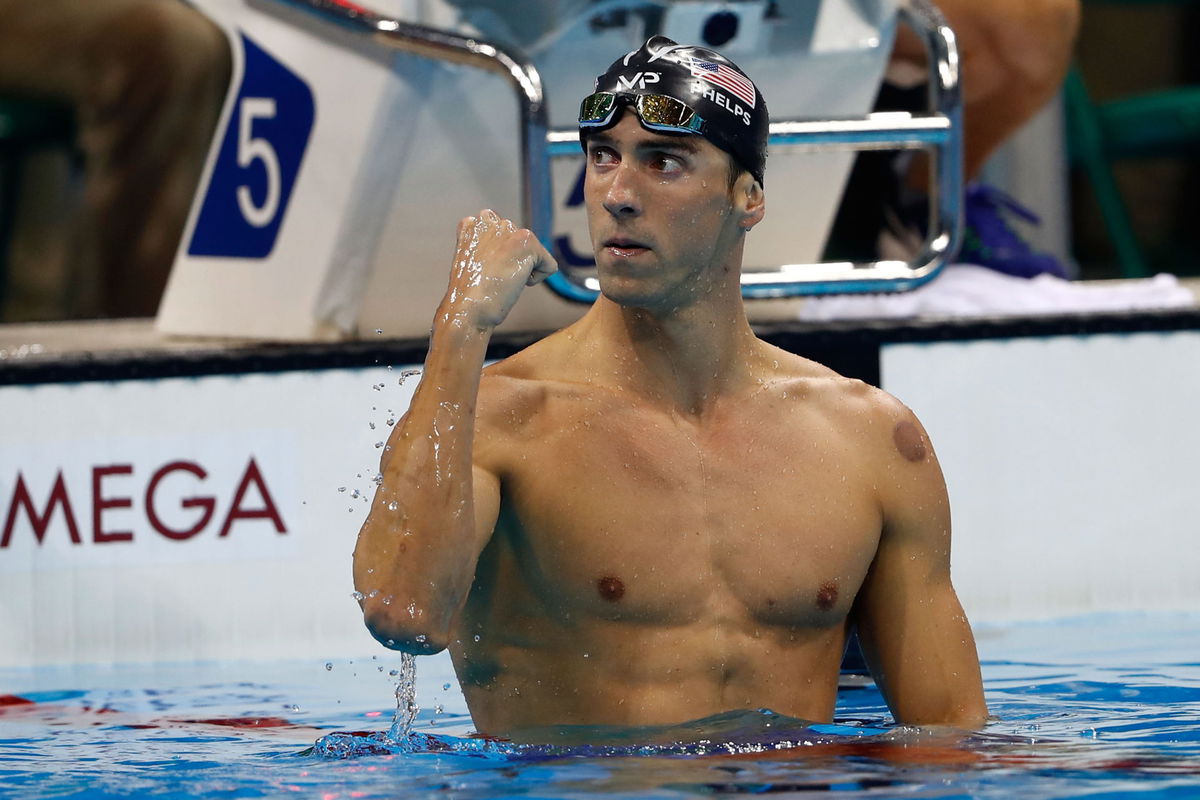
Getty
RIO DE JANEIRO, BRAZIL – AUGUST 09: Michael Phelps of the United States celebrates winning gold in the Men’s 200m Butterfly Final on Day 4 of the Rio 2016 Olympic Games at the Olympic Aquatics Stadium on August 9, 2016 in Rio de Janeiro, Brazil. (Photo by Clive Rose/Getty Images)

Getty
RIO DE JANEIRO, BRAZIL – AUGUST 09: Michael Phelps of the United States celebrates winning gold in the Men’s 200m Butterfly Final on Day 4 of the Rio 2016 Olympic Games at the Olympic Aquatics Stadium on August 9, 2016 in Rio de Janeiro, Brazil. (Photo by Clive Rose/Getty Images)
When anyone talks about the sport of swimming, Michael Phelps arguably is the first name they recognise in the sport. In a professional career spanning well over a decade, the 36-year-old achieved unprecedented success in the pool, making him one of the attractions of the Summer Olympics.
Watch What’s Trending Now!
ADVERTISEMENT
In fact, Phelps is the most decorated Olympian of all-time with 28 medals. While displayed his incredible ability, the fact that 23 of those 28 are gold medals further enhances his dominance on the big stage.
There’s no doubt about the hard work Phelps put in to achieve this amount of success. This is seen in his physique, which many believe gave him a massive advantage over his competitors in the pool.
ADVERTISEMENT
How did Michael Phelps benefit from his impressive physical structure?
Phelps made his Olympic debut at the 2000 Sydney Olympics, when he was just 15 years old. Although he didn’t win a medal in Australia, he displayed signs of becoming one of the best swimmers of his generation.
ADVERTISEMENT
Four years later, Phelps won a staggering six gold medals in the Athens Olympics. He produced incredible pace across the butterfly, backstroke and freestyle disciplines, much in part due to his physique.

Getty
BEIJING – AUGUST 11: Michael Phelps of the United States celebrates finishing the Men’s 4 x 100m Freestyle Relay Final in first place to win the gold medal held at the National Aquatics Center on Day 3 of the Beijing 2008 Olympic Games on August 11, 2008 in Beijing, China. (Photo by Shaun Botterill/Getty Images)
At 6″4, the 36-year-old was among the tallest individuals in the sport. This allowed him to glide extremely well in the water which helped in building momentum. In addition, he also possesses an immense wingspan of 6″7, which helps him generate massive pulling power. These aspects helped him in the butterfly event, which relies on the back and upper arms.
ADVERTISEMENT
View this post on Instagram
Phelps also possesses a rare combination of a lengthy upper body and short legs. His triangle-shaped torso helped him in the butterfly and freestyle since it was more hydrodynamic than his competitors. Although his legs aren’t those you would see on someone with his height, they help in generating extra thrust when he turns off the wall during races.
Top Stories
Falcons Owner Arthur Blank Makes Double Firing Decision as Locker Room Stands Against Raheem Morris’ Exit

Cowboys Star Faces NFL Discipline For Jaxson Dart Incident Against Giants

NFL Makes Final Punishment Decision on Shedeur Sanders Incident in Week 17

49ers’ Deommodore Lenoir Goes on Expletive-Laced Rant Against Troy Aikman After Criticism From Cowboys Legend

Kyle Whittingham Cuts Ties With Wink Martindale & Five Michigan Coaches in Major Shake-Up

Kirk Cousins Announces Return Stance With Falcons After Atlanta’s Four-Game Win Streak

The 36-year-old also had extremely flexible joints. They possessed more mobility than average, which helped him achieve a greater range of motion than those he raced against.
ADVERTISEMENT
Phelps also benefitted from producing less lactic acid
So far, all of Phelps’ advantages lie in his incredibly well-crafted physique. However, he also had another ace up his sleeve in terms of recovery after a race.

Getty
RIO DE JANEIRO, BRAZIL – AUGUST 13: Gold medalist Michael Phelps of the United States poses during the medal ceremony for the Men’s 4 x 100m Medley Relay Final on Day 8 of the Rio 2016 Olympic Games at the Olympic Aquatics Stadium on August 13, 2016 in Rio de Janeiro, Brazil. (Photo by Al Bello/Getty Images)
The production of lactic acid after events requires athletes to undergo much-needed recovery. Since Phelps’ body produced less lactic acid in such cases, he needed lesser recovery time than other swimmers. This helped him succeed in the Olympics, where swimmers often compete in multiple events on the same day.
ADVERTISEMENT
There’s no doubt that Phelps is arguably the greatest swimmer of all-time. Although the new generation of swimmers look promising, it could be a long wait for anyone to match his achievements in the pool.
READ MORE: Where Does US Swimming Legend Michael Phelps Live Now?
ADVERTISEMENT
ADVERTISEMENT
ADVERTISEMENT
ADVERTISEMENT

